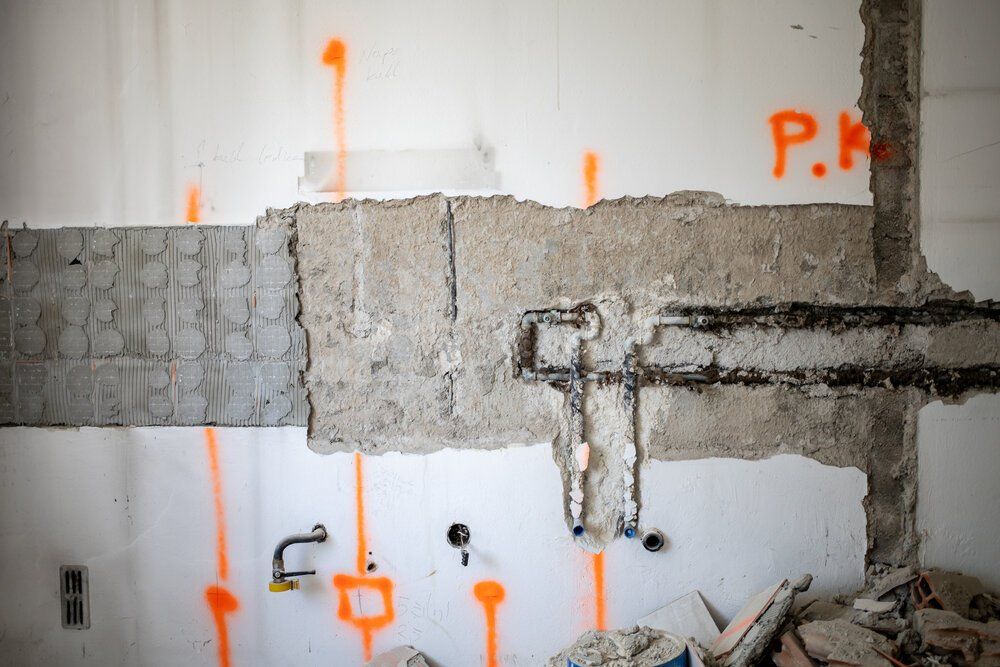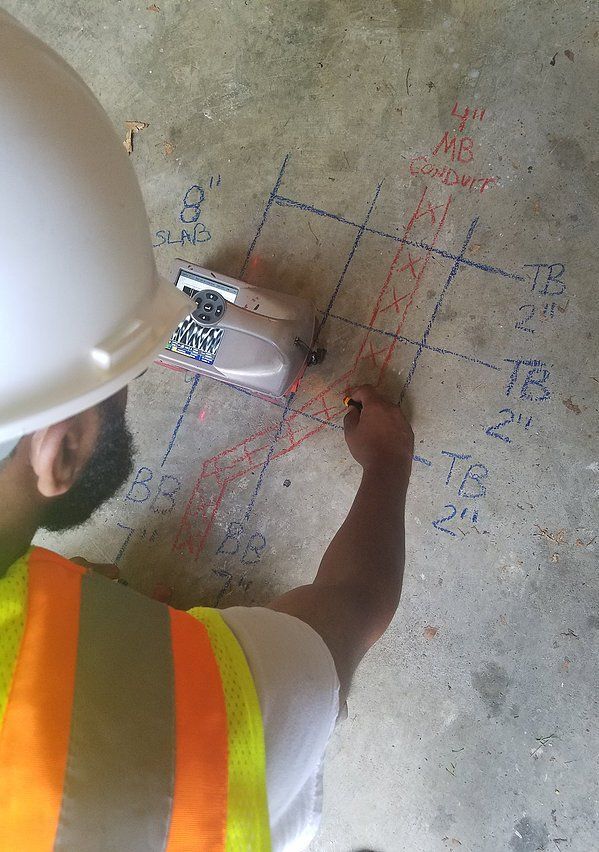CONCRETE SCANNING
How we scan concrete for rebar and metals
Concrete Scanning Made Easy
Concrete scanning is an important practice that must take place before any destructive work is done. Whether it be drilling, coring or cutting, concrete scanning using a GPR (ground penetrating radar) is very important. Prior to doing any activities that could comprise the integrity of the concrete, a scan should be conducted. This is just one aspect provided by our team here at Elite Utility Locating.

What concrete scanning?
To be specific, concrete scanning is a type of radar detection. It is when a GPR is used to carefully detect materials, as well as voids within the slab of concrete.
This method is a non-destructive assessment. Concrete scanning detects embedded utilities and prevents workers from drilling, coring or cutting into them. A ground penetrating radar uses reflected radio waves. The process is safe and non-invasive. It is also versatile.
What is it used for?
Concrete scanning is commonly used for subsurface utility engineering, private utility locating, finding utility location in concrete, pre-construction mapping of utilities, underground utility locating, safety hazard detection and more. The practice of concrete scanning is very important for preventing damage to the concrete structure. Any damage to the rebar or post-tension cables has the risk of causing structural failure, which can severely injure and lead to death.
The GPR is used for carefully detecting rebar, rebar patterns, post-tension cables, conduits and pipes. This device can also accurately detect deterioration in concrete and voids in concrete. This is a good thing, as it helps workers to avoid a dangerous structural collapse. The radio waves travel throughout the concrete and produce a radargram. This radargram is interpreted by a trained technician. They will be able to determine the type of material, location and depth in the concrete. This is especially beneficial for slab-on-grade, where both sides of the concrete are not accessible.
GPR vs. Concrete X-ray - Which is better?
As mentioned previously, GPR uses reflected radio waves, revealing subsurface undulations. On the other hand, a concrete X-ray shows a clear and concise image of the subsurface. While an X-ray can produce a definitive image with the location and type of embedded material, a GPR report must be analyzed by a trained technician.
However, when it comes to which is more efficient, the GPR is best used when you do not have the access you need to both sides of the concrete. Furthermore, if you can successfully complete the job without exact imagining, a GPR is suitable. Lastly, a GPR is less expensive and overall a more cost-effective option.
How accurate is the GPR for concrete?
A GPR is accurate to a degree. For example, the scan can detect material is present at a particular location in the concrete. It can also give the density of that material, but it won't be able to tell you the exact location of the material. This is where a trained technician would provide their analysis on the detected material. You need a trained eye and mind to interpret the data collected from the scan.
How far down underground can it reach?
A normal GPR can scan depths of 100 feet (30 meters) in low conductivity materials. With concrete, we typically tell clients that we can effectively scan slabs up to 2 feet thick.
How Concrete Scanning Can Help Your Project
Concrete scanning can be used in a variety of ways. It leverages GPR to slabs, retaining walls and core structures. It can also be used in trenching and core penetrating projects with construction.
The GPR scans the concrete to find and locate rebar, conduit, pipes post stitching cables. This helps ensures the contractors do not cut or damage anything when core drilling or trenching. By knowing where all items are within the concrete, it can always be a safe construction environment.
